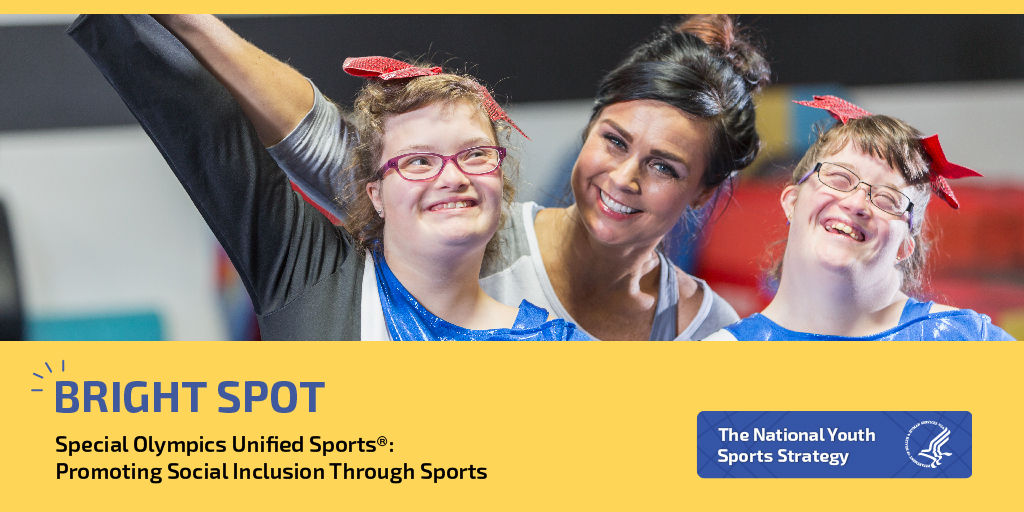
From the National Youth Sports Strategy Bright Spots, a series that highlights how successful programs are boosting youth sports participation across the Nation.
It can be hard for kids with disabilities to get involved in sports at school. Too often, lack of understanding or stereotypes about disability lead to exclusion from many social activities, including sports.
The Special Olympics Unified Sports® program aims to break down these barriers. Since 1989, Unified Sports has promoted social inclusion both on and off the field by bringing people with and without intellectual disabilities together on sports teams. For young children, the focus is mainly on motor development in a fun, inclusive setting. For older children and adolescents, it’s more about the “team sport” experience. But the idea is the same for all age groups: sports participation can build leadership skills, promote social inclusion, and increase awareness of intellectual disabilities.
“There’s a kind of magic that happens,” says Brian Quinn, Senior Manager of Unified Champion Schools at Special Olympics International. “Sports break down barriers. When students are working together on a team, they’re working toward a shared goal.” Scott Weaver agrees. Weaver is a Senior Manager for Unified Sports and Sports Education at Special Olympics North America. “That team mentality can be a catalyst for social inclusion, acceptance, and understanding,” he says.
Strategies: Provide Resources and Build Local Support
Sometimes, explains Weaver, schools simply don’t have the resources or personnel to support sports teams. So Unified Sports has worked to normalize the program, increase its visibility, and even provide resources to some schools. “Partnering with athletic directors and state athletic associations can really help,” adds Quinn, pointing to their partnership with the National Federation of State High School Associations. This relationship allows Unified Sports to offer free online training to future coaches — and accessible training means more coaches in schools.
Quinn and Weaver say it’s important to emphasize that Unified Sports isn’t only a sports program — it’s an opportunity to cultivate a philosophy, climate, and culture of inclusion within the whole school community. And sometimes, all it takes to establish the program in a new school is one advocate — a teacher or an administrator — who recognizes its value.
Impact: Improvements Across the Board
The program’s impact is undeniable. Evaluation of Unified Sports as a whole — which also includes programming for adults — shows that it increases social inclusion, changes attitudes and behaviors, improves physical fitness, and increases team members’ confidence and self-esteem.
Tens of thousands of athletes in more than 6,500 schools across the country play on Unified Sports teams. And according to an evaluation of schools that incorporate Unified Sports in their school-wide strategy:
- 97% of high school seniors reported that Unified Champion Schools activities are improving their schools
- 86% of school staff reported that the program is reducing bullying and teasing
- 89% of program liaisons reported that more students with intellectual disabilities are participating in school activities
Lesson Learned: Get Everyone on the Same Team
Weaver stresses that you can’t create programs that fit the culture without input from the people you serve. “Kids know what they need — listen to them. Get feedback and follow through,” he says. “And don’t do it alone,” adds Quinn. “Look for other organizations with similar values and include them in the process.”
At the end of the day, Quinn says, it’s about students coming together on the same team. “They’re all leaders, and they’re all learning from each other.”